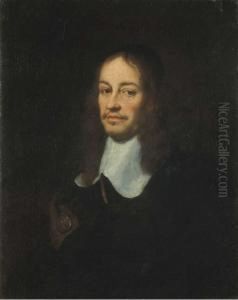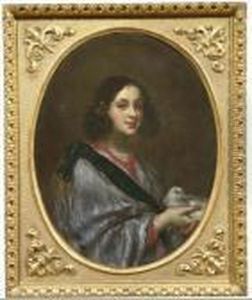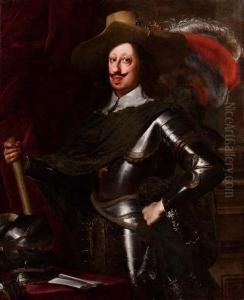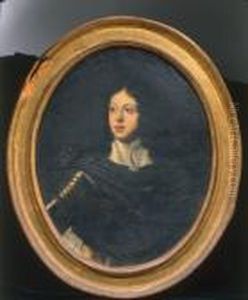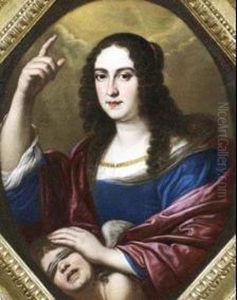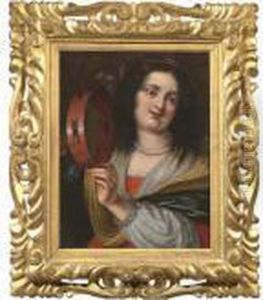Giusto Suttermans Paintings
Giusto Suttermans, also known as Justus Sustermans, was a Flemish painter who played a significant role in the development of Baroque portrait painting in Italy during the 17th century. Born in Antwerp, Belgium, on September 28, 1597, Suttermans demonstrated an early interest in art. His initial training was in his hometown, a city renowned for its vibrant artistic community. Antwerp was a center for the Northern Baroque style, and it is within this rich cultural environment that Suttermans honed his skills.
In pursuit of further artistic development, Suttermans traveled to Italy, a common practice among Northern European artists seeking to study the works of the Renaissance masters and the emerging Baroque style. He spent time in Rome and Florence, where he was profoundly influenced by the dynamism and naturalism of Italian art. His talents were recognized by the Medici court in Florence, where he became the court painter. This position allowed him to paint portraits of many notable figures of his time, including Cosimo II de' Medici, Ferdinando II de' Medici, and Galileo Galilei. These works are celebrated for their vivid realism, attention to detail, and psychological depth, characteristics that distinguished Suttermans as one of the leading portraitists of his era.
Suttermans' work is characterized by a masterful use of color and light, with a particular ability to capture the textures of fabrics and the subtleties of facial expressions. His portraits are not just mere representations but are imbued with a sense of the subject's status, personality, and even thoughts, making them invaluable documents of the period's historical and cultural context.
Throughout his career, Suttermans remained in Florence, where he contributed significantly to the artistic life of the city. He was involved in the Accademia del Disegno, an institution that played a crucial role in the artistic community of Florence. His influence extended beyond his immediate circle, impacting the development of portraiture in Italy and across Europe.
Giusto Suttermans passed away on April 23, 1681, in Florence. His legacy is preserved in the numerous portraits that hang in galleries and collections around the world, serving as a testament to his skill and to the vibrant cultural exchange between the Flemish and Italian artistic traditions during the Baroque period.
